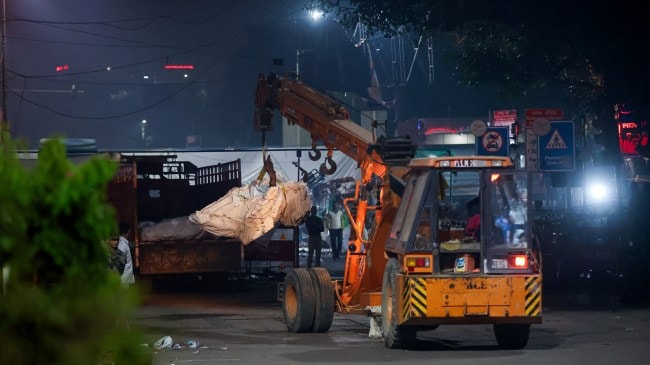Opinion A catastrophe averted by a hair’s breadth, a long road ahead
Counter-terror needs political oxygen and economic opportunity. It is a long haul, not a quick battle

The orange flash near the Red Fort Metro Station signal — followed by the sharp crack that ripped through Delhi’s winter air, near one of India’s most iconic national monuments — was not just another act of violence. It was a message, a portent. It told us that even after years of relative quiet, the architecture of terror is alive, patient, adaptive — and now increasingly educated.
Major terror strikes in India’s metros had declined sharply. Delhi was safe for the last 14 years. A successful vehicular blast — metres from the Red Fort — breaks the pattern. It signals that modules have once again managed to cross states, embed in cities, procure explosives, and plan operations quietly for months — the latest being developed for the last two years. After a lull, any breach is not an isolated failure; it is a structural warning.
Radicalisation of the educated is a global pattern. The involvement of doctors in the Red Fort module is not unprecedented, but it is deeply worrying. Around the world, terrorism has long ceased to be a phenomenon restricted to the uneducated or socio-economically deprived. The youth from Kerala lured through online propaganda by the ISIS demonstrated how deeply and persuasively extremist indoctrination works in the digital age.
This incident also exposes a deeper social vulnerability. At the Faridabad college hostel where one of the accused stayed, no peers came forward, despite unusual behaviour, unexplained absences, and suspicious movement patterns for the last two years. Vehicles went to Mewat to collect ammonium nitrate many times to bring in batches. Plans were hatched in several meetings in one room. In J&K, too, neighbours, landlords, and acquaintances ignored early signs when the module was being built. An alert police officer in Nowgam connected the dots and exposed the network.
India’s deradicalisation strategy cannot rest on police personnel alone. Principals, hostel wardens, university heads, community elders, religious leaders, and local politicians must all recognise early indicators and intervene. Radicalisation today begins with memes, encrypted groups, and influencers — not in traditional spaces alone. A society that does not report becomes a society that unintentionally shelters extremism. The Prime Minister must call the chief ministers and ask them to engage the youth, the educated middle class to discuss societal issues in the interest of the nation. Only political engagement for votes leaves a large section out of involvement with the nation in any form.
If the Red Fort blast symbolised the urban Vehicle Borne Improvised Explosive Device (VBIED) threat, the Gujarat ricin plot revealed something far darker.
Ricin is a lethal toxin. If mixed with temple prasad, it could have caused mass casualties within minutes. That plot, too, involved doctors and educated individuals. Both modules reveal a disturbing pattern – of educated actors, using professional credibility, to create high-impact, low-visibility terror events — the new face of radicalisation.
The seizure of 2,900 kg of explosive material prevented a series of coordinated attacks across northern India. But the Red Fort explosion still raises uncomfortable questions.
Why didn’t Delhi’s Smart Control Room detect a loitering vehicle? Modern cities use AI-enabled integrated traffic and CCTV systems to identify: Repeated passing of the same car, abnormal halts, suspicious parking behaviour, drivers switching off phones or covering plates, or cars circling monuments. Delhi has the infrastructure — but not the predictive intelligence layer. AI-based anomaly detection could have flagged the loitering vehicle.
How could Dr Umar drive 60 km to Delhi without being stopped at a single police naka? After the Faridabad seizure, an alert must have been flashed instantly across NCR. This is a serious tactical lapse. Threat alerts must translate into real-time, physical interception.
If the module with interstate linkages was developing for the last two years, how did none of the state intelligence agencies or the Intelligence Bureau get even a whiff of such a sinister plot?
Ammonium nitrate is cheap, accessible, and deadly when mixed with fuel or RDX. It was used in the 2011 Delhi High Court blast and several IM/LeT-linked attacks. Every batch of ammonium nitrate carries traceable markers. Countries like Australia have robust monitoring systems; India must enforce similar, strict tracking from factory to distributor to end user. Any unusual diversion or hoarding should immediately trigger a red alert.
One of the most reassuring aspects of this crisis was India’s political maturity. The government did not rush to blame neighbouring countries, and the Opposition avoided point-scoring. In an age of instant outrage, this restraint is not weakness — it is strength.
The blast will inevitably revive questions on Kashmir, Article 370, and militancy. The removal of Article 370 could never have eliminated terror — “muscular solutions” rarely work. Such claims should never be made while fighting terrorism. What is required is trust-building. So restore statehood, let the elected Chief Minister be accountable for security, engage Kashmir’s middle class and empower youth through education, entrepreneurship, and mobility.
Counter-terror needs political oxygen and economic opportunity. It is a long haul, not a quick battle. The Red Fort blast is not just an incident; it is an inflexion point. It reminds us that terror evolves, adapts, and hides behind respectability. It warns us that modules grow quietly when society stays silent. It shows us that technology without intelligence is ineffective, and intelligence without real-time action is inadequate.
India has prevented a catastrophe — but only by a hair’s breadth. The road ahead requires patience, political maturity, technological upgrading, and a society-wide vigilance. No tall claims, no slogans, just steady, relentless work.
The writer, former IPS officer, served as Central Information Commissioner, Secretary Security, GOI and Special Director, Intelligence Bureau




